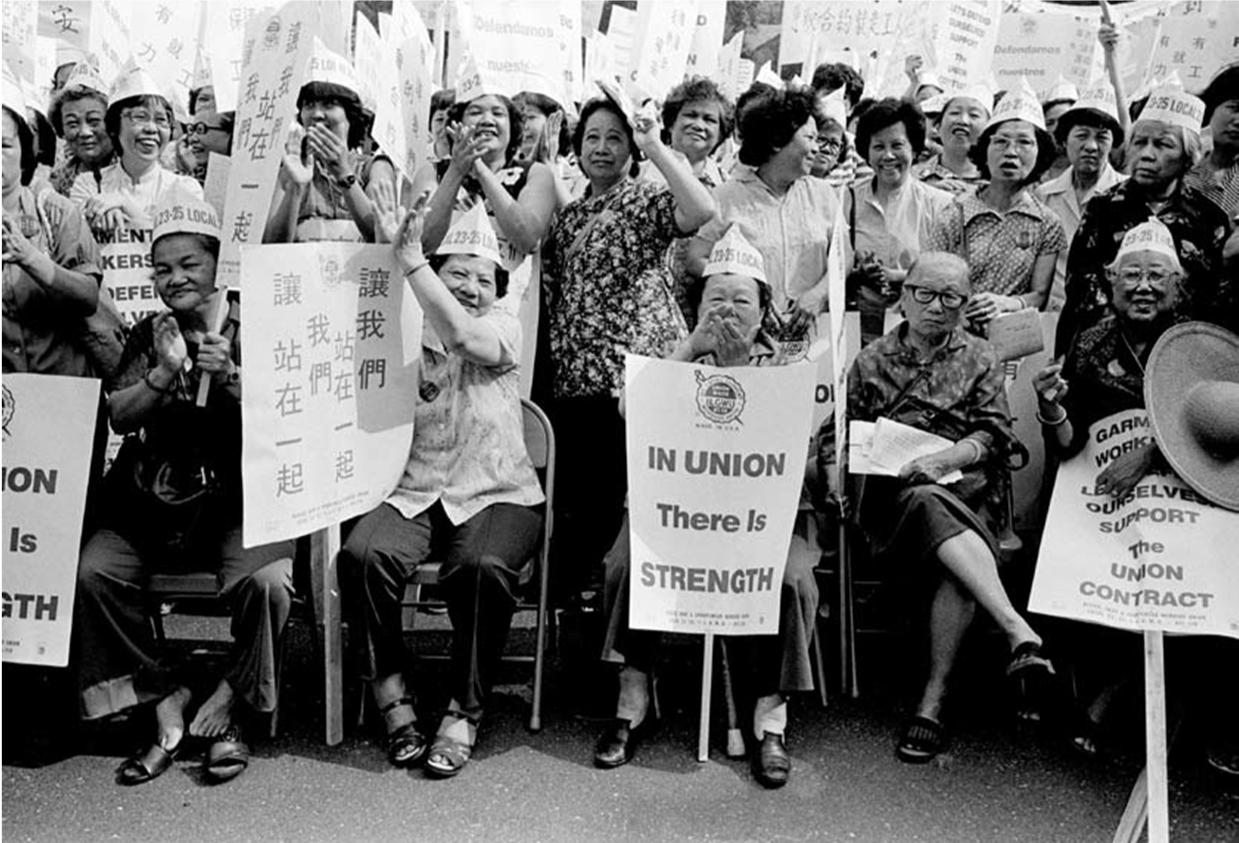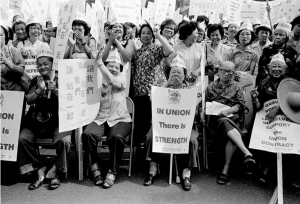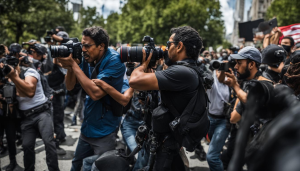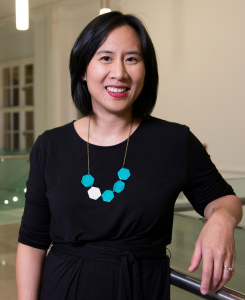Asian American women’s history is often overlooked, despite its richness and significance in the broader context of Asian American history. In a groundbreaking exhibition at the Schlesinger Library, efforts are underway to shine a light on the forgotten narratives of Asian women, showcasing their vital contributions and experiences through archives of Asian women. The exhibition, titled “Illuminate: Contextualizing Asian American Women’s Stories Through the Archives,” features a variety of artifacts, including historical images and documents that reveal insights into the lives of these women and their struggles. By examining these materials, the exhibition taps into themes of Asian women empowerment, encouraging viewers to recognize the histories often pushed to the margins. This initiative not only educates the public about the past but also inspires a deeper appreciation for the roles Asian American women have played throughout history.
The exploration of the narratives surrounding women of Asian descent is integral to understanding their diverse roles in American society. Alternative terms like “Asian women’s historical impact” and “narratives of Asian female empowerment” provide a broader lexicon to discuss the journey and contributions of these individuals. Much like the ongoing conversations in various fields, the exhibition at the Schlesinger Library aims to resurrect stories that have historically been sidelined, revealing the complexities and depth of Asian American women’s experiences. By contextualizing these significant histories within contemporary frameworks, scholars and activists alike work to challenge historical erasure and celebrate the resilience and achievements of Asian women. Ultimately, these discussions contribute to a richer, more inclusive representation of history that highlights the vibrant tapestry of American identity.
The Legacy of Asian American Women’s History
Asian American women have historically occupied a unique space within the broader narrative of American history, marked by both marginalization and resilience. The Schlesinger Library’s exhibit, “Illuminate: Contextualizing Asian American Women’s Stories Through the Archives,” seeks to spotlight these often overlooked narratives. By showcasing artifacts such as photographs and legal documents, the exhibition reclaims and celebrates the contributions of Asian American women, highlighting their roles not only as figures of cultural curiosity but as pivotal agents of change and empowerment in their communities.
Through curated collections that span 150 years, the exhibit invites viewers to engage with the complexities of Asian American women’s experiences. Whether through the lens of legal battles fought by early Chinese immigrants or the artistic expressions of contemporary women leaders, it becomes clear that these forgotten narratives carry profound implications for understanding the history of the United States. Furthermore, this exhibit exemplifies how academic collaboration can breathe life into archives of Asian women, encouraging a newfound appreciation for their stories that have remained in the shadows for far too long.
Revisiting Forgotten Narratives
The stories of Asian American women have often been relegated to the margins of historical accounts, overshadowed by their male counterparts and the dominant narratives of race and culture in the United States. The Schlesinger Library’s archival treasures, from the photographs of Jessie Tarbox Beals to the legal cases concerning immigration, serve as powerful reminders of this erasure. The ongoing research by students in the course “Asian American Women’s History” demonstrates a concerted effort to uncover these hidden stories, allowing for a richer and more inclusive understanding of American history.
By revisiting forgotten narratives, the exhibition exemplifies the importance of memory and representation in education and public history. As students like Sophia Wang explore legal cases involving courageous women such as Ah Fong, they not only recover these lost voices but also connect them to broader themes of resistance and identity. This process of revisitation not only honors the past but also inspires contemporary generations, showing how the legacies of these women continue to shape discussions on Asian American empowerment today.
The Role of Archives in Asian Women Empowerment
Archives, like those at the Schlesinger Library, play a crucial role in the empowerment of Asian American women, providing a platform to document their histories and significant contributions. As curator Victor Betts highlights, many women in the 19th and 20th centuries lacked the agency to share their own narratives, a gap that contemporary archivists and scholars are working to bridge. By preserving letters, photographs, and personal accounts, archives can ensure that these voices are finally heard and recognized within the larger context of Asian American history.
Moreover, the insight gained from these archives fosters a sense of solidarity and collective identity among Asian American women today. The contemporary participants in the exhibit draw parallels between their stories and those of their ancestors, creating a continuum of strength and resistance against systemic challenges. This empowerment through archival engagement not only revitalizes historical narratives but also builds avenues for future activism and cultural production, ensuring that the stories of Asian American women are told on their own terms.
Artistic Expressions in Asian American History
The integration of artistic expressions within the exhibition at the Schlesinger Library is a testament to the profound connection between art and historical narrative. The artwork commissioned from Taiwanese-American artist Shaina Lu brings new dimensions to the stories of Asian American women, transforming spaces and sparking conversation. By utilizing light and translucent materials, Lu’s art serves as a metaphor for the illumination of marginalized histories, rendering visible the contributions of those who have long been relegated to obscurity.
Artivism, the intersection of artistry and activism, plays a crucial role in advocating for Asian American narratives. As local artists like Shaina Lu reflect upon the historical struggles and triumphs of Asian American women, they not only reclaim these legacies but also inspire future generations to continue this dialogue. Through creative expression, the legacies of these women can resonate not just within the confines of academia but across diverse communities, fostering greater understanding and appreciation of their significant impact throughout American history.
Senate of Women’s Leadership and Participation
The exhibition also emphasizes the leadership roles that Asian American women have played throughout history, especially in the realm of social justice and community organizing. The acknowledgement of these leaders within the Schlesinger Library archives illustrates how contemporary movements for equity and representation owe much to the groundwork laid by women of the past. The historical accounts of activists and trailblazers unveil a dynamic lineage of leadership that continues to resonate today, informing ongoing conversations around race, gender, and power.
Highlighting the stories of women who organized against injustices—whether they be legislative battles or grassroots community movements—underscores the essential contributions of Asian American women to American society. This recognition serves not just as a historical account but as a call to action for future leaders, inspiring solidarity and encouraging emerging voices to participate actively in shaping a more inclusive and equitable society.
Intersectionality in Asian American Women’s Experiences
The concept of intersectionality emerges as a critical framework for understanding the multifaceted experiences of Asian American women throughout history. Their stories are shaped not only by race but by the overlapping influences of class, gender, and historical context. The Schlesinger Library exhibit aptly illustrates how differing backgrounds and experiences intersect to create unique narratives of struggle and empowerment, enriching the broader fabric of Asian American history.
By engaging with these intersections, the exhibit invites a deeper reflection on how the experiences of Asian American women cannot be understood in isolation from broader societal dynamics. It highlights the necessity of acknowledging diverse experiences within the Asian American community, emphasizing that addressing the unique challenges faced by these women requires a more nuanced approach that takes into consideration their varied identities and backgrounds.
The Impact of COVID-19 on Asian American Women
The COVID-19 pandemic has cast a spotlight on racism and discrimination faced by Asian American communities, particularly Asian women. The Schlesinger Library’s exhibition thoughtfully contextualizes this contemporary moment within the longer history of anti-Asian sentiment, demonstrating that the challenges Asian American women face today are deeply rooted in historical injustices. By drawing connections between past and present, the exhibition encourages viewers to consider how these enduring issues affect the lives and narratives of Asian American women.
As the pandemic highlighted the vulnerabilities of Asian American women, it also sparked new waves of activism and community solidarity. The stories of those who organized in response to the rise in anti-Asian violence serve as a reminder of the strength and resilience of these communities. Recognizing and uplifting the voices of Asian American women in times of crisis is vital for fostering understanding and change, ensuring that their narratives of courage are included within the ongoing discourse around race and equity in America.
Collaborative Models in Research and Archiving
The exhibit at the Schlesinger Library serves as a remarkable model for collaborative research and learning, engaging students in the process of uncovering and sharing Asian American women’s histories. Co-taught by Victor Betts and Erika Lee, the undergraduate course emphasizes an inquiry-based approach, allowing students to engage with the archives and directly contribute to the narratives presented in the exhibition. This model not only enriches the educational experience for students but also democratizes knowledge production, making it a shared endeavor among diverse voices.
Through collaboration between archivists, educators, and students, the exhibit creates a platform for dialogue and exchange, fostering a deeper collective understanding of Asian American women’s roles in history. This innovative approach exemplifies how academic institutions can serve as catalysts for social change by enabling students to challenge existing narratives and actively participate in reclaiming histories that have long been overlooked.
The Importance of Cultural Representation in History
Cultural representation plays a crucial role in how histories are constructed and understood. The Schlesinger Library’s exhibition highlights the urgent need to include Asian American women’s narratives within the larger tapestry of American history. By amplifying their voices, the exhibit challenges the prevailing narratives that typically prioritize Western perspectives, underscoring the importance of diverse histories in shaping contemporary society.
The inclusion of Asian American women in historical narratives not only enriches our understanding of the past but also encourages a more inclusive future. Acknowledging their contributions fosters a sense of belonging and recognition for Asian American communities, validating their experiences and identities in the American landscape. Ultimately, cultural representation is not merely about inclusion; it is about redefining the way history is perceived, understood, and taught across generations.
Frequently Asked Questions
What is the significance of the Schlesinger Library exhibition on Asian American women’s history?
The Schlesinger Library exhibition, titled “Illuminate: Contextualizing Asian American Women’s Stories Through the Archives,” focuses on the largely invisible narratives of Asian American women, showcasing artifacts spanning 150 years. It highlights the contributions and roles of Asian women in history, aiming to challenge assumptions and educate the public about their experiences. The exhibit serves both as an archive and a call to recognize these stories as integral parts of Asian American history.
How does the exhibition at Schlesinger Library address forgotten narratives in Asian American women’s history?
The exhibition at Schlesinger Library brings to light forgotten narratives of Asian American women by showcasing archival materials, including photographs and legal documents. It emphasizes how these women have been marginalized in historical accounts and encourages visitors to reflect on the impact of erasure on their stories. By facilitating discussions on these narratives, the exhibition aims to reclaim and honor the contributions of Asian American women to American history.
Which historical figures are highlighted in the context of Asian American women’s history at the Schlesinger Library?
The Schlesinger Library exhibition highlights several important figures from Asian American women’s history, including Ah Fong, who was a Chinese woman involved in a landmark court case regarding immigration at the Port of San Francisco. Additionally, the exhibition features works related to early Asian female photojournalists and showcases the stories of notable chefs and authors whose narratives have recently gained recognition. These individuals exemplify the diverse contributions Asian American women have made over time.
What types of materials are included in the Schlesinger Library’s archives of Asian women?
The Schlesinger Library’s archives of Asian women include a wide range of materials such as photographs, legal documents, political posters, comic books, and zines. This diverse collection illustrates the experiences of Asian American women across different historical periods, from the Chinese Exclusion Act to contemporary issues faced during the COVID-19 pandemic. These materials are vital for understanding the complexities of Asian American women’s history and their roles in societal changes.
In what ways did student projects contribute to the understanding of Asian American women’s history at the Schlesinger Library?
Student projects at the Schlesinger Library, particularly those undertaken during the course on Asian American Women’s History, play a significant role in uncovering and interpreting Asian American women’s history. By researching archival materials, students like Caroline D. Topinio and Sophia Wang brought attention to forgotten narratives and legal battles, enhancing public understanding of historical events and individual stories. Their work exemplifies the power of collaboration in bringing Asian American women’s history to the forefront.
How does the exhibition ‘Illuminate’ seek to redefine our understanding of Asian American women’s history?
The exhibition ‘Illuminate’ aims to redefine our understanding of Asian American women’s history by actively engaging viewers with stories and artifacts that have been historically overlooked. It challenges the traditional narratives and emphasizes the importance of including these women’s experiences in the broader context of American history. By showcasing these often marginal narratives, the exhibition encourages audiences to reconsider how history is told and how Asian American women’s contributions have shaped society.
| Key Points |
|---|
| Exhibition Title: Illuminate: Contextualizing Asian American Women’s Stories Through the Archives. |
| Location: Schlesinger Library, Harvard University |
| Duration: On display until January 23, 2025 |
| Focus: Highlighting the marginalized stories of Asian American women throughout history. |
| Collaboration: Students and archivists work together to resurrect these stories. |
| Key Artifacts: Includes photographs of Ainu and Visayan women from the 1904 World’s Fair. |
| Educational Component: Linked to a course on Asian American Women’s History. |
| Cultural Representation: Challenges assumptions on the visibility of Asian American women. |
| Contemporary Narratives: Emphasizes modern stories alongside historical ones. |
| Important Cases: Discusses the 1874 court case of Ah Fong and its implications. |
| Art Contribution: Features artwork from Taiwanese-American artist Shaina Lu. |
| Call to Action: Encourages inclusion of Asian American women’s history in broader historical narratives. |
Summary
Asian American women’s history is often overlooked, but the recent exhibition “Illuminate” at the Schlesinger Library highlights the rich and complex narratives of these women throughout history. This exhibition not only sheds light on the stories of Ainu and Visayan women from the 1904 World’s Fair but also emphasizes the collaborative efforts of students and archivists to bring these forgotten histories to the forefront. By showcasing key artifacts and engaging with contemporary narratives, the exhibition redresses the historical erasure and invites a deeper understanding of the vital roles Asian American women have played in shaping American culture and society. As we reflect on these marginalized stories, it becomes evident that Asian American women’s history is an integral part of the broader American narrative, deserving of recognition and respect.




